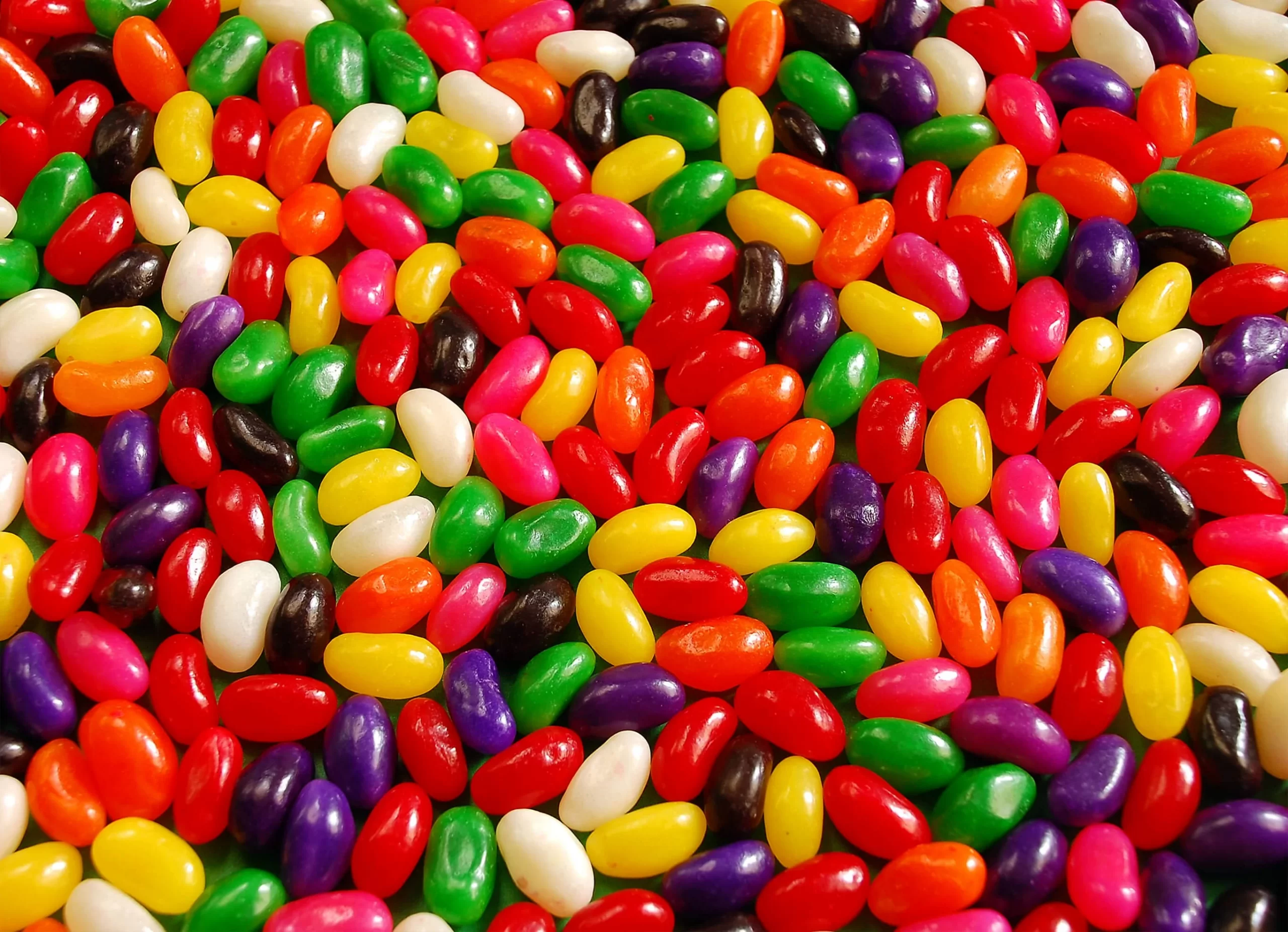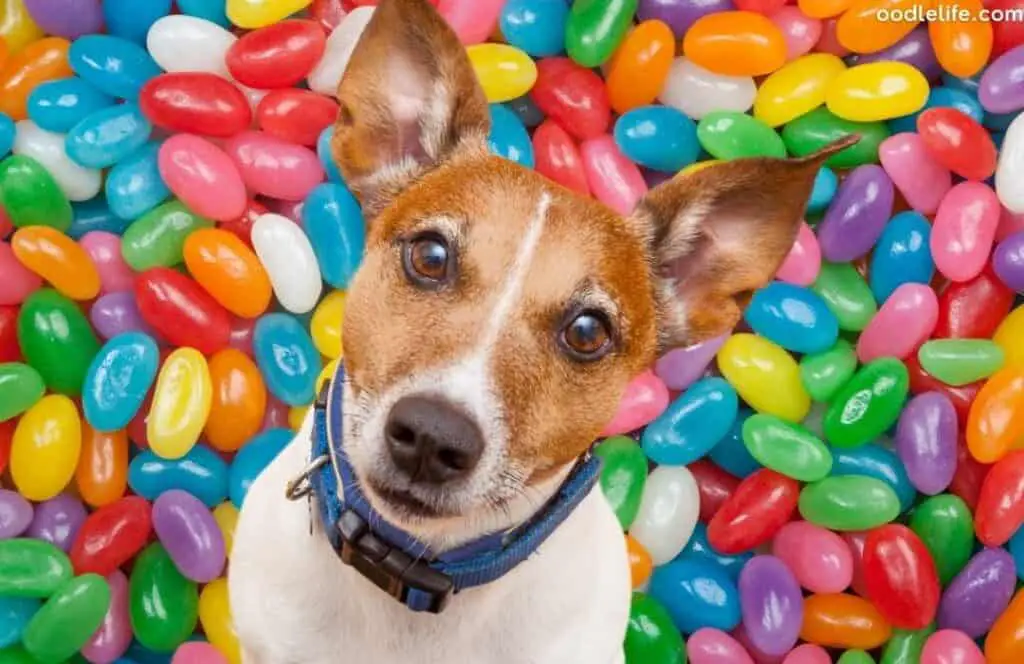Jelly beans are an undeniably enticing snack for both humans and their canine companions. While pets may be tempted by the flavor and color of jelly beans, dog owners should understand the potential danger that can come from overindulging in this particular candy. In this article, we’ll examine the potential risks associated with feeding your pup jelly beans and provide insight into safe consumption limits. If you’re a pet parent who loves jelly beans, read on to learn how your favorite treat could affect the health of your beloved pooch!

Understanding the Risks:
It’s important to remember that, however tempting jelly beans may be, they should not be given to dogs. Giving jelly beans to a dog carries potential risks such as:
High sugar content: The sugar content in jelly beans can result in a number of health issues for pets. Eating large amounts of sugar can lead to weight gain and dental problems, as well as behavioral complications such as hyperactivity. Therefore, pet owners should limit their pet’s sugar intake, particularly when it comes to jelly beans.
Artificial sweeteners: It’s important to note that certain jelly beans contain the artificial sweetener xylitol, which is toxic to dogs. If ingested, it can lead to drastic health effects like hypoglycemia (low blood sugar), seizures, liver failure, and even death. It’s vital for pet owners to be aware of these risks and take precautions with their furry friends.
Gastrointestinal problems: Excessive jelly bean consumption may cause digestive issues in canines due to its high sugar levels. The disruption of the bacteria balance in their intestinal tract results in stomach discomfort and diarrhea.
It is generally unwise to give your dog jelly beans or other similar sweets. For maximum safety, choose treats that have been specifically tailored to meet your pet’s dietary needs. These kinds of treats won’t jeopardize their health or wellbeing in any way. For the best results, it is recommended to keep all sugary snacks away from your dog.

Xylitol Toxicity
Xylitol is an artificial sweetener often used in sugar-free snacks and products. However, it can be very dangerous for dogs, even if it seems like a healthier alternative to regular sugar. That’s why it is important to always keep xylitol away from your furry friends.
Xylitol ingestion in dogs can lead to a rapid insulin release, resulting in hypoglycemia and other serious symptoms, including vomiting, lack of coordination, seizures and potential liver failure. In the most severe cases, xylitol poisoning can be fatal. Pet owners should safeguard all products containing this artificial sweetener and seek veterinary attention if they suspect their dog has ingested anything with xylitol in it. Time is of the essence when dealing with poisoning; prompt action is essential for a favorable outcome.
It is crucial that pet owners are aware of the potential health risks associated with xylitol, an increasingly popular sugar-substitute found in many sugar-free products. To protect our pets, it vital to keep all products containing xylitol out of their reach. Taking proactive steps like this will help ensure that our furry companions stay safe and healthy.
Recommended Dosage
It is not recommended to feed your dog jelly beans, but if you do, caution and moderation should be exercised. One or two jelly beans per day is enough for an average-sized dog. Keep in mind that jelly beans are high in sugar which can lead to digestive issues like diarrhea and vomiting. Additionally, some types of candy may have xylitol which is toxic to dogs and potentially fatal.
For the health of your dog, we recommend against feeding them jelly beans. Instead, seek out treats specifically made for dogs that do not contain sugar or harmful ingredients. Before giving your dog any new food or treats, it is best to consult your veterinarian first.
What to Do If Your Dog Eats Jelly Beans?
If your pet has consumed jelly beans or any other type of candy, it’s important you first consider the amount and type of candy they ingested. Once that is established, it will be essential to contact a veterinarian for advice and further guidance.
Pet owners should be aware of signs that may indicate a health issue in their dog. These symptoms include vomiting, diarrhea, lethargy, anorexia, polydipsia (increased thirst), polyuria (frequent urination), and hyperactivity. In severe cases, the animal may manifest seizures or experience difficulty breathing. It is important to keep an eye out for these possible signs and to contact a veterinarian right away if any appear.
If you believe that your pet has ingested candy, it is essential to reach out to a veterinarian right away. From there, they can provide guidance on how to best handle the situation and may even suggest scheduling an appointment for further assessment.
Treatment for candy ingestion in canines may involve inducing vomiting to remove any remaining candy from their stomach. Other medications may be prescribed if your pet is experiencing severe symptoms such as vomiting or diarrhea. In some cases, hospitalization might be necessary. If your dog has consumed candy, please contact your veterinarian immediately.
When it comes to the safety of your dog, preventive measures are key. Make sure that sweets and other potentially hazardous foods or treats remain out of your pet’s reach at all times, and always keep a close eye on their activities when they are around food-related items. Taking these precautionary steps will help ensure that unpleasant accidents can be avoided.
Conclusion:
Ultimately, responsible pet ownership is a crucial part of maintaining the health and well-being of our four-legged family members. It is essential to be vigilant about what we feed them, making sure to avoid any foods that could potentially cause harm, such as jelly beans. In addition, carefully checking product labels prior to offering anything new is advised. Seeking medical advice from a trusted veterinarian on dietary needs and health concerns is also recommended. With these steps taken into consideration, we can help make sure our pets remain comfortable and content for many years to come. The importance of being a responsible pet owner cannot be understated; let’s all do our part in keeping our furry companions safe.




